An AST-ELM Method for Eliminating the Influence of Charging Phenomenon on ECT
Abstract
:1. Introduction
2. Effects of Electrification Phenomenon on ECT Using Simulation Analysis
3. AST-ELM Image Reconstructed Method
4. Simulation and Experimental Results and Discussions
4.1. Simulation
4.2. Experimental Result and Discussion
5. Conclusions
Acknowledgments
Author Contributions
Conflicts of Interest
References
- Huang, S.M.; Stott, A.L.; Green, R.G.; Beck, M.S. Electronic transducers for industrial measurement of low value capacitances. J. Phys. E Sci. Instrum. 2000, 21, 242–250. [Google Scholar] [CrossRef]
- Pusppanathan, J.; Rahim, R.A.; Phang, F.A.; Mohamad, E.J.; Ayob, N.M.N.; Rahiman, M.H.F.; Seong, C.K. Single-Plane Dual Modality Tomography for Multiphase Flow Imaging by Integrating Electrical Capacitance and Ultrasonic Sensors. IEEE Sens. J. 2017, 17, 6368–6377. [Google Scholar] [CrossRef]
- Marashdeh, Q.; Warsito, W.; Fan, L.S.; Teixeira, F.L. A multimodal tomography system based on ECT sensors. IEEE Sens. J. 2007, 7, 426–433. [Google Scholar] [CrossRef]
- Yang, W.Q.; Liu, S. Role of tomography in gas/solids flow measurement. Flow Meas. Instrum. 2000, 11, 237–244. [Google Scholar] [CrossRef]
- Zhang, W.; Wang, C.; Yang, W.; Wang, C.H. Application of electrical capacitance tomography in particulate process measurement—A review. Adv. Powder Technol. 2014, 25, 174–188. [Google Scholar] [CrossRef]
- Dyakowski, T.; Jeanmeure, L.F.C.; Jaworski, A.J. Application of electrical tomography for gas–solids and liquid–solids flows—A review. Powder Technol. 2000, 112, 174–192. [Google Scholar] [CrossRef]
- Rasel, R.; Zuccarelli, C.; Marashdeh, Q.; Fan, L.S.; Teixeira, F. Towards Multiphase Flow Decomposition Based on Electrical Capacitance Tomography Sensors. IEEE Sens. J. 2017, 17, 8027–8036. [Google Scholar] [CrossRef]
- Jaworski, A.J.; Dyakowski, T. Application of electrical capacitance tomography for measurement of gas–solids flow characteristics in a pneumatic conveying system. Meas. Sci. Technol. 2001, 12, 1109–1119. [Google Scholar] [CrossRef]
- Bailey, A.G. Charging of solids and powders. J. Electrostat. 1993, 30, 167–180. [Google Scholar] [CrossRef]
- Nifuku, M.; Sasaki, T. Static electrification phenomena in pneumatic transportation of coal. J. Electrostat. 1989, 23, 45–54. [Google Scholar] [CrossRef]
- Matsusaka, S.J.; Mitsuhiro, O.; Masuda, H. Bipolar charge distribution of a mixture of particles with different electrostatic characteristics in gas–solids flow. Powder Technol. 2003, 135–136, 150–155. [Google Scholar] [CrossRef]
- Matsusaka, S.; Masuda, H. Electrostatics of particles. Adv. Powder Technol. 2003, 14, 143–166. [Google Scholar] [CrossRef]
- Kanazawa, S.; Ohkubo, T.; Nomoto, Y.; Adachi, T. Electrification of a pipe wall during powder transport. J. Electrostat. 1995, 35, 47–54. [Google Scholar] [CrossRef]
- Gao, H.; Xu, C.; Fu, F.; Wang, S. Effects of particle charging on electrical capacitance tomography system. Measurement 2012, 45, 375–383. [Google Scholar] [CrossRef]
- Li, J.; Kong, M.; Xu, C.; Wang, S.; Wang, S. Influence of particle electrification on AC-based capacitance measurement and its elimination. Measurement 2015, 76, 93–103. [Google Scholar] [CrossRef]
- Mao, M.; Ye, J.; Wang, H.; Yang, W. Investigation of gas–solids flow in a circulating fluidized bed using 3D electrical capacitance tomography. Meas. Sci. Technol. 2016, 27, 095401. [Google Scholar] [CrossRef]
- Cui, Z.; Cui, Z.; Wang, Q.; Wang, Q.; Xue, Q.; Xue, Q.; Sun, B.; Wang, H.; Yang, W.; Cao, Z. A review on image reconstruction algorithms for electrical capacitance/resistance tomography. Sens. Rev. 2016, 36, 429–445. [Google Scholar] [CrossRef]
- Hu, H.L.; Xu, T.M.; Hui, S.E. A high-accuracy, high-speed interface circuit for differential-capacitance transducer. Sens. Actuators Phys. 2006, 125, 329–334. [Google Scholar] [CrossRef]
- Pasadas, D.J.; Ribeiro, A.L.; Ramos, H.G.; Rocha, T.J. Automatic parameter selection for Tikhonov regularization in ECT Inverse problem. Sens. Actuators Phys. 2016, 246, 73–80. [Google Scholar] [CrossRef]
- Zhang, J.; Hu, H.; Dong, J.; Yan, Y. Concentration measurement of biomass/coal/air three-phase flow by integrating electrostatic and capacitive sensors. Flow Meas. Instrum. 2012, 24, 43–49. [Google Scholar] [CrossRef]
- Banasiak, R.; Wajman, R.; Jaworski, T.; Fiderek, P.; Fidos, H.; Nowakowski, J.; Sankowski, D. Study on two-phase flow regime visualization and identification using 3D electrical capacitance tomography and fuzzy-logic classification. Int. J. Multiph. Flow 2014, 58, 1–14. [Google Scholar] [CrossRef]
- Zhou, B.; Zhang, J.Y.; Xu, C.L.; Wang, S.M. Image reconstruction in electrostatic tomography using a priori knowledge from ECT. Nucl. Eng. Des. 2011, 241, 1952–1958. [Google Scholar] [CrossRef]
- Liu, X.; Wang, X.; Hu, H.; Li, L.; Yang, X. An extreme learning machine combined with Landweber iteration algorithm for the inverse problem of Electrical Capacitance Tomography. Flow Meas. Instrum. 2015, 45, 348–356. [Google Scholar] [CrossRef]
- Huang, G.B.; Zhu, Q.Y.; Siew, C.K. Extreme learning machine: Theory and applications. Neurocomputing 2006, 70, 489–501. [Google Scholar] [CrossRef]
- Mou, C.H.; Peng, L.H.; Yao, D.Y.; Zhang, B.F.; Xiao, D.Y. A Calculation Method 0f Sensitivity distribution with Electrical Capacitance Tomography. Chin. J. Comput. Phys. 2006, 23, 87–92. [Google Scholar]
- Huang, G.B.; Zhou, H.; Ding, X.; Zhang, R. Extreme learning machine for regression and multiclass classification. IEEE Trans. Syst. Man Cybern. Part B Cybern. 2012, 42, 513–529. [Google Scholar] [CrossRef] [PubMed]
- Dong, X.; Ye, Z.; Soleimani, M. Image reconstruction for electrical capacitance tomography by using soft-thresholding iterative method with adaptive regulation parameter. Meas. Sci. Technol. 2013, 24, 085402. [Google Scholar] [CrossRef]
- Liu, S.; Fu, L.; Yang, W.Q.; Wang, H.G.; Jiang, F. Prior-online iteration for image reconstruction with electrical capacitance tomography. IEEE Proc. Sci. Meas. Technol. 2004, 151, 195–200. [Google Scholar] [CrossRef]
- Yan, J.B.; Wang, X.X.; Hu, H.L. Multi-sensor information processing and fusion platform. In Proceedings of the 2013 Seventh International Conference on Sensing Technology (ICST), Wellington, New Zealand, 3–5 December 2013; pp. 495–500. [Google Scholar]
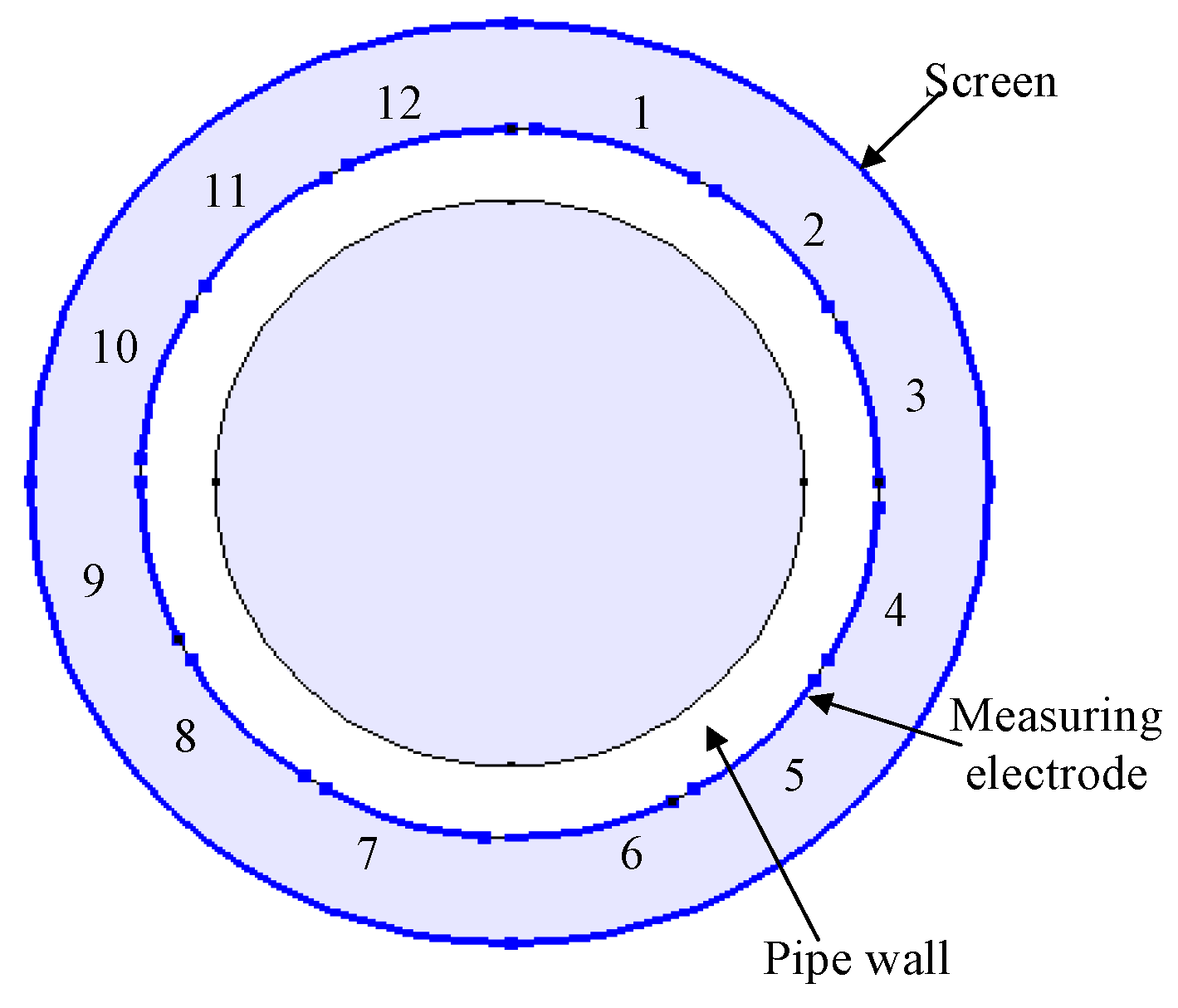
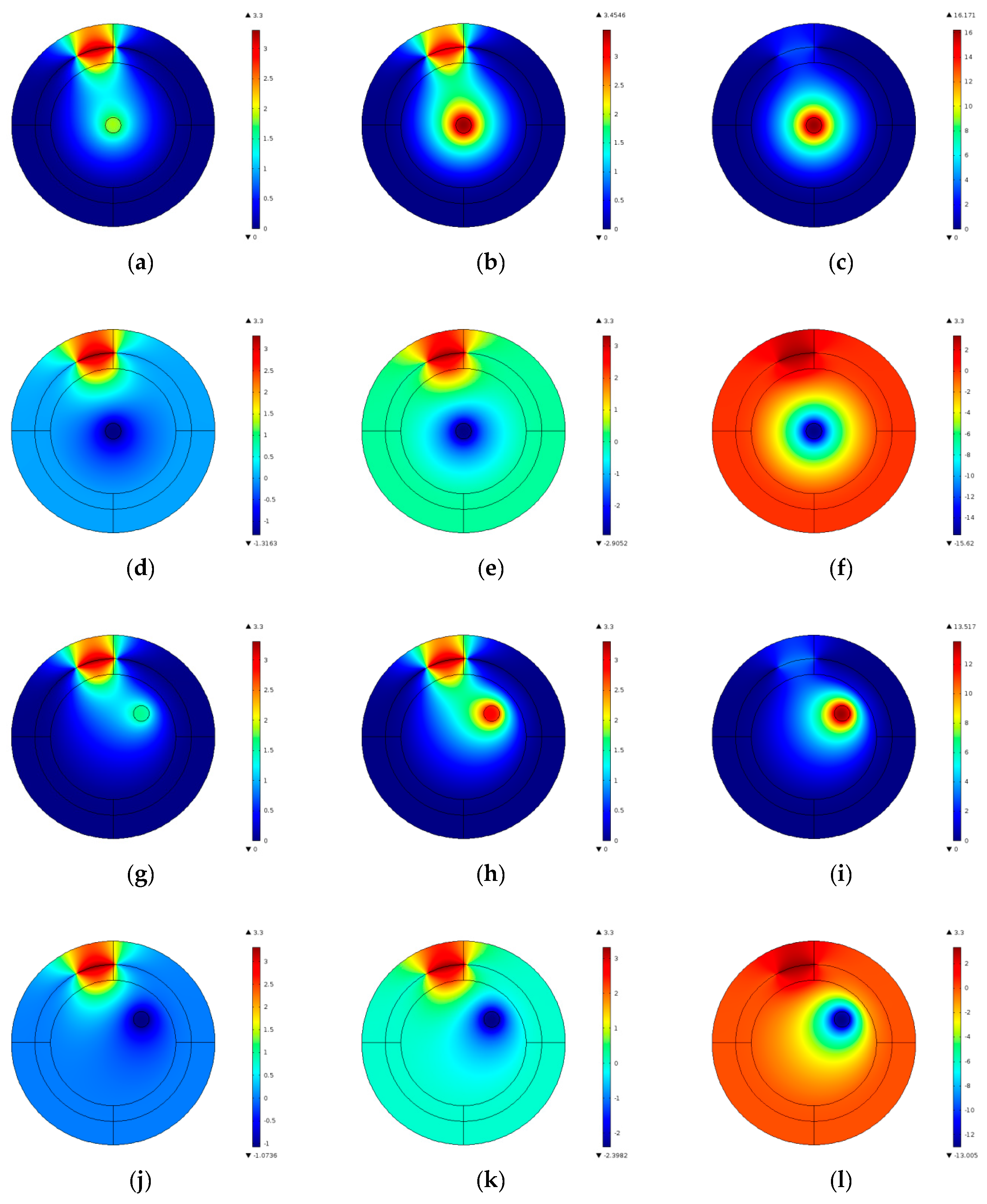

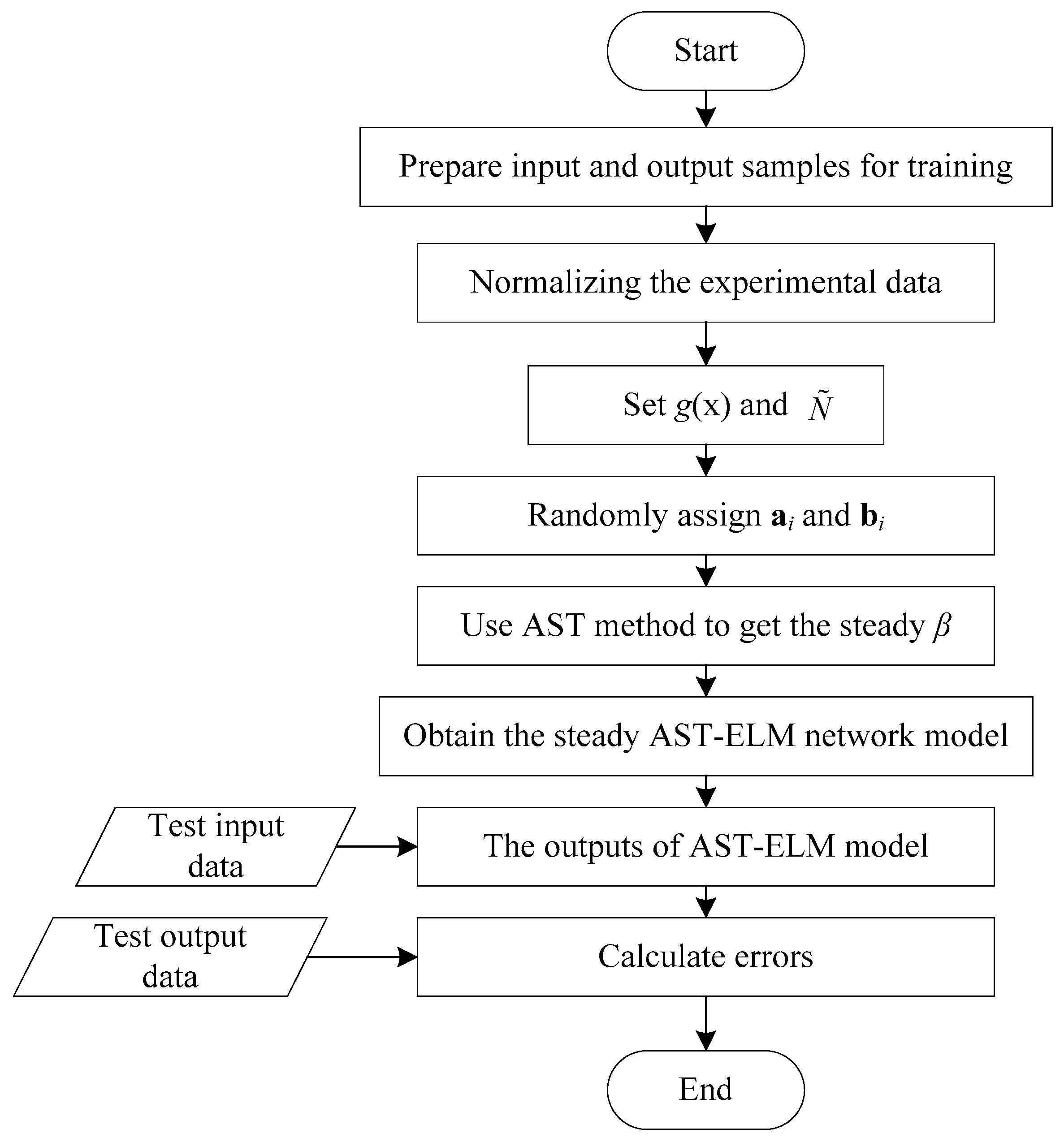
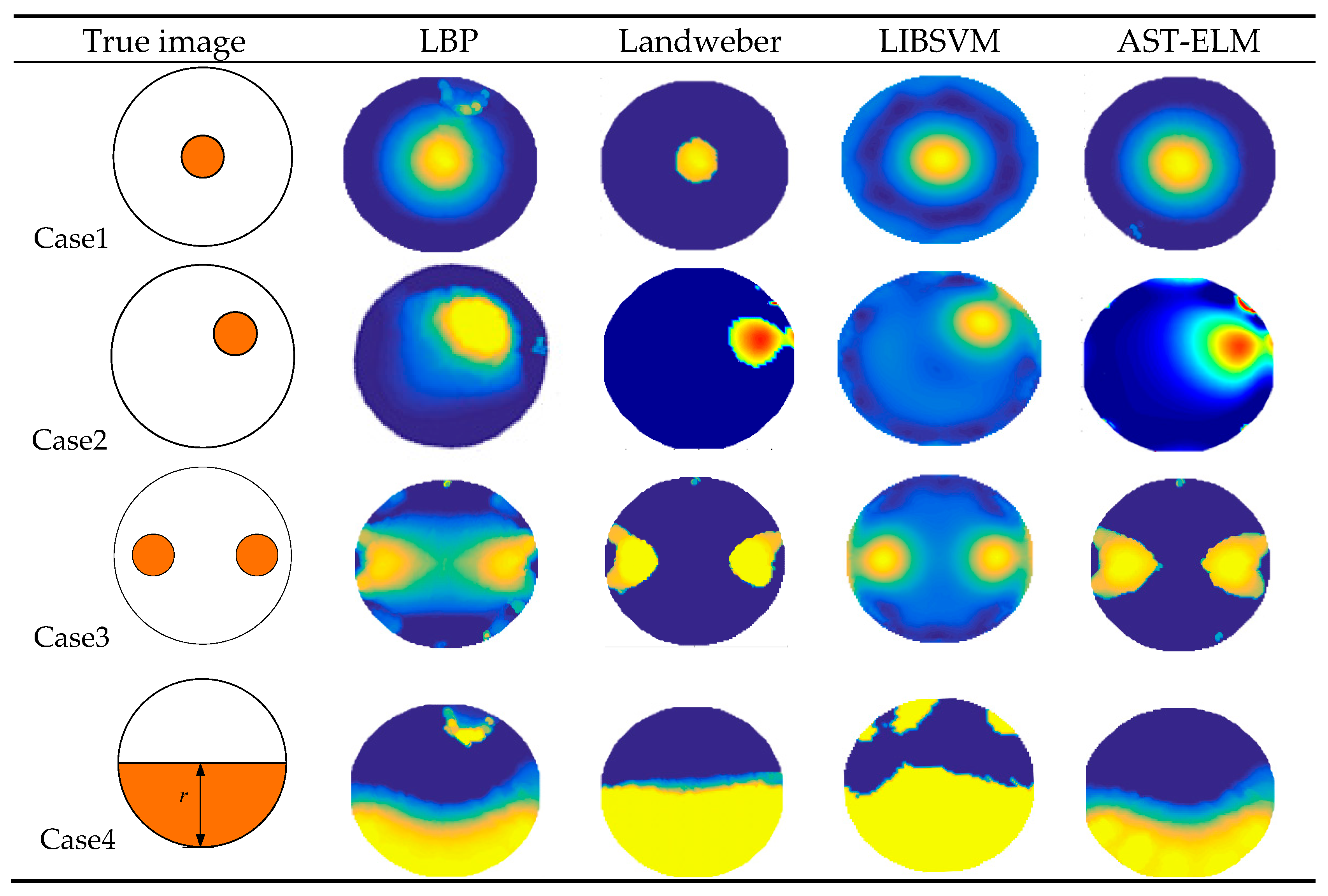
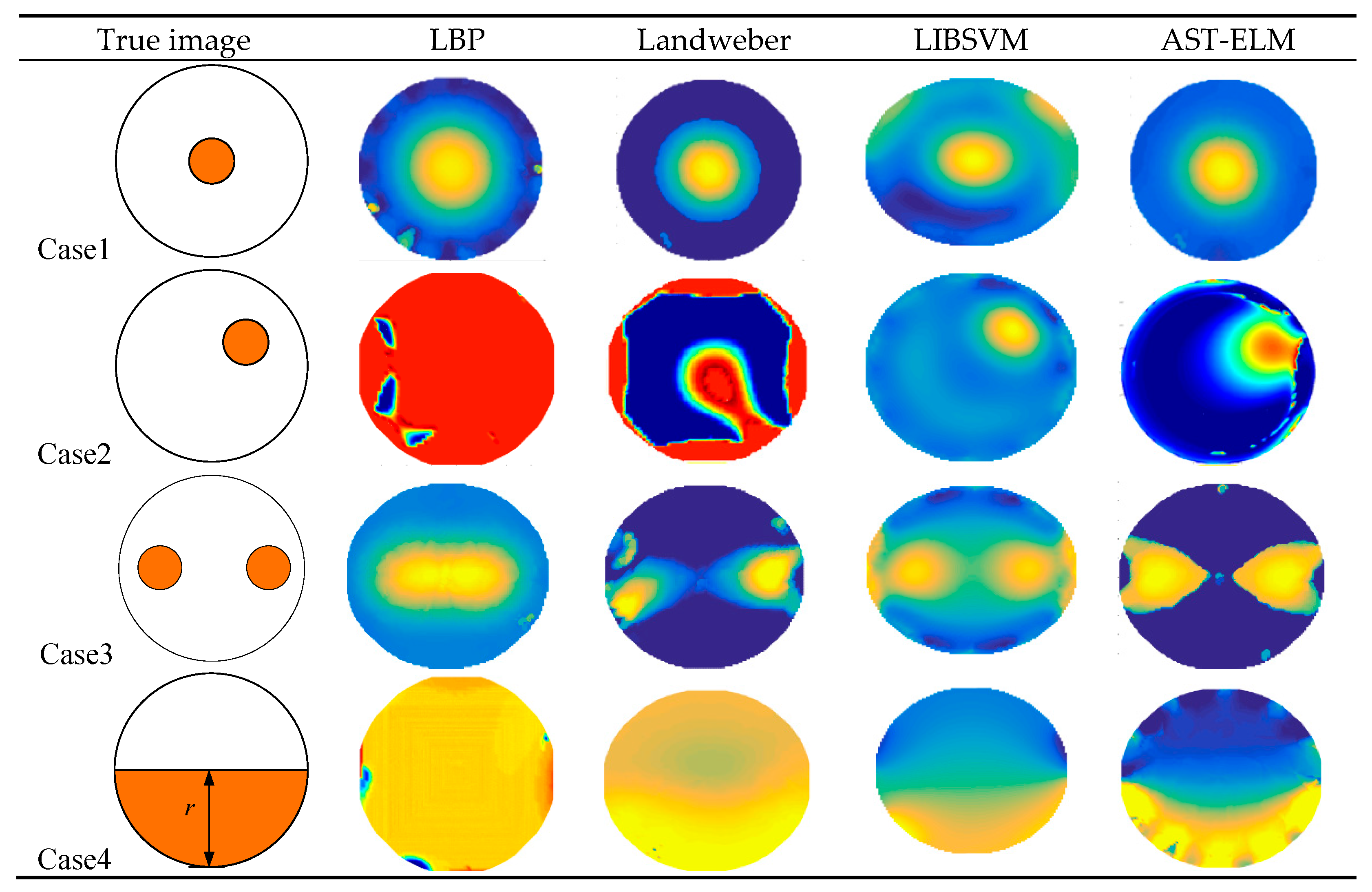

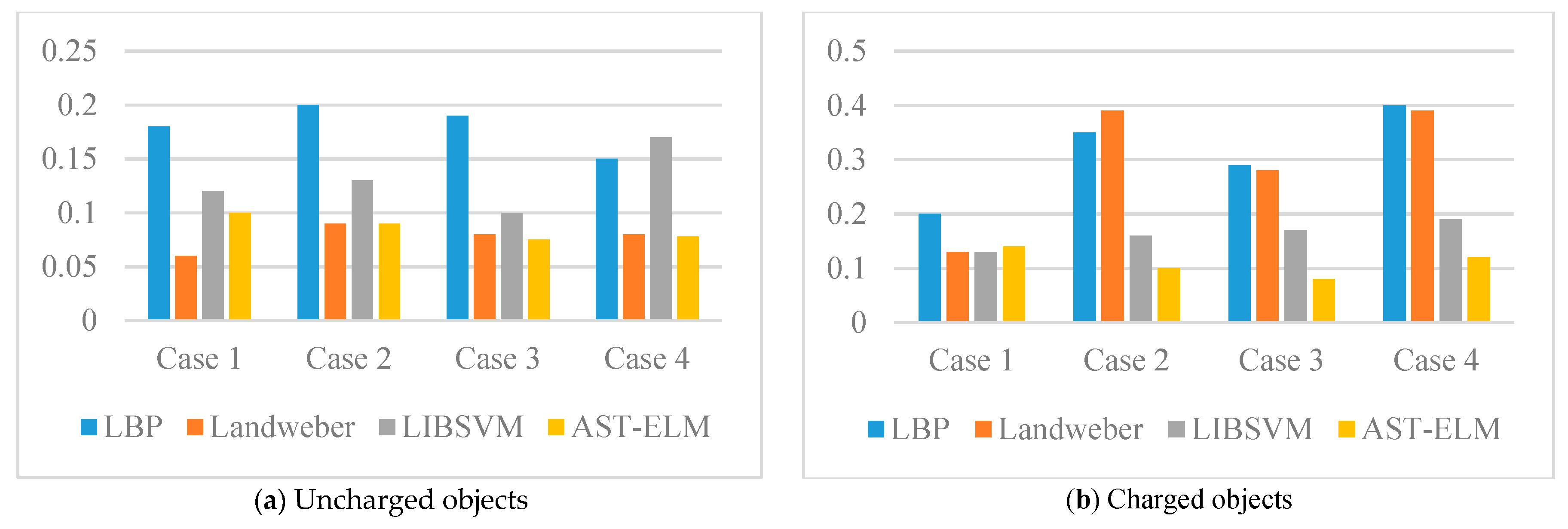
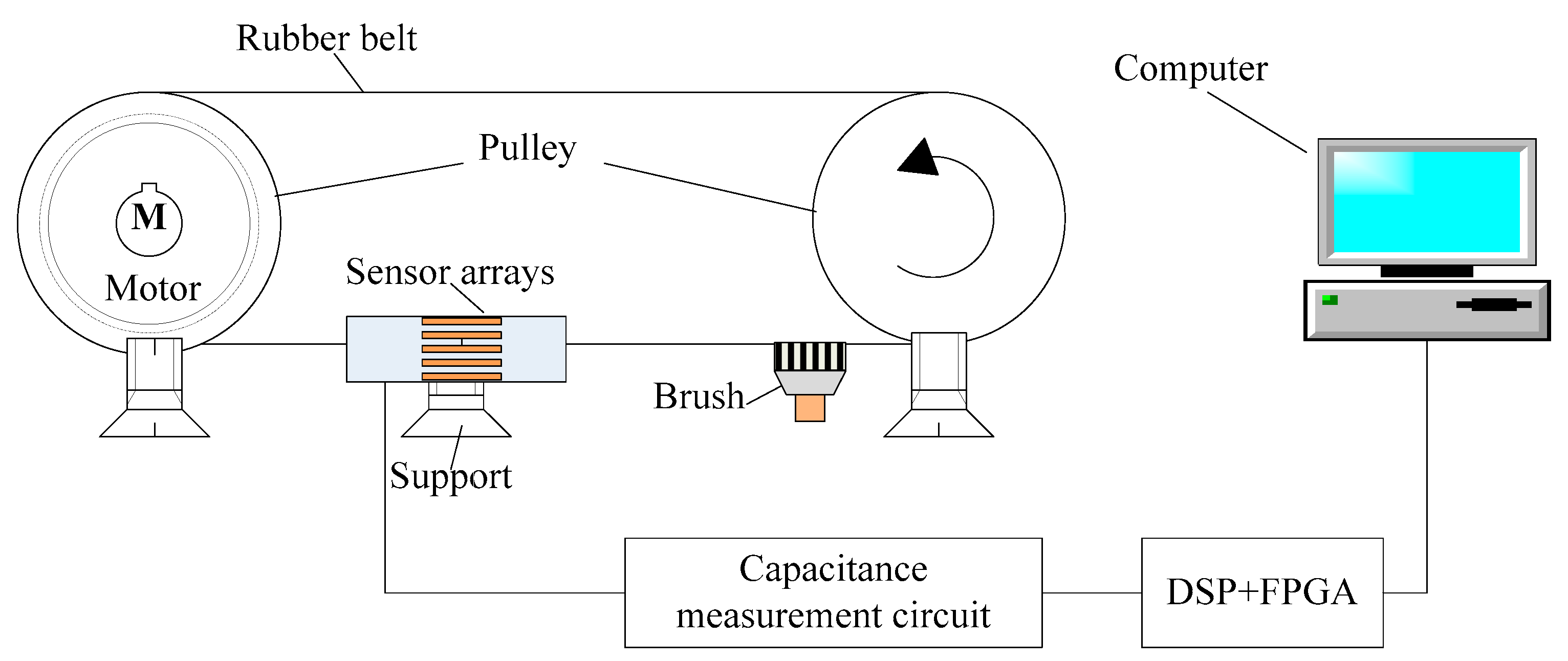
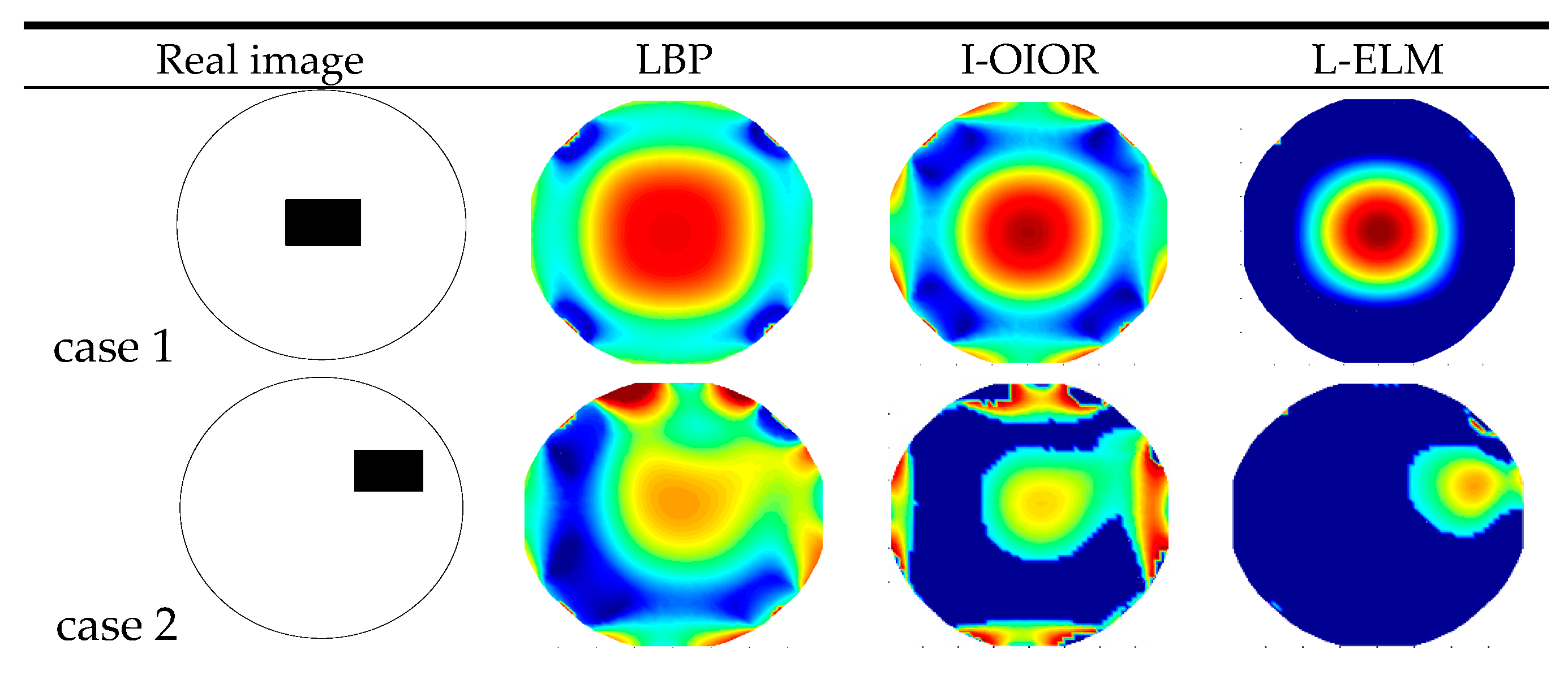

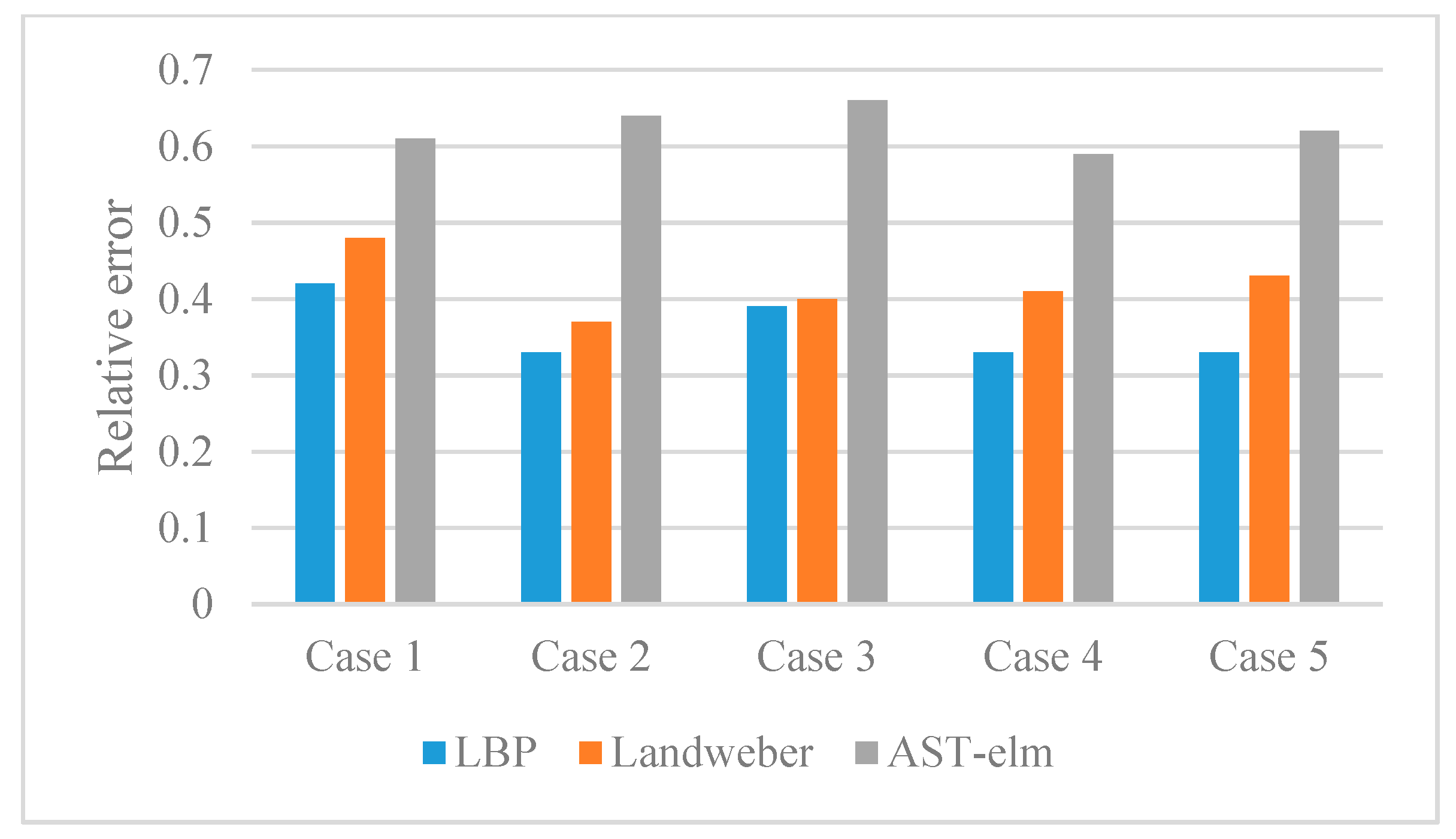

| Methods | LBP | Landweber | LIBSVM | AST-ELM | ||
|---|---|---|---|---|---|---|
| Average time (s) | Reconstruction | Reconstruction | Training | Reconstruction | Training | Reconstruction |
| 0.52 | 1.09 | 103.20 | 0.56 | 3.30 | 0.44 | |
© 2017 by the authors. Licensee MDPI, Basel, Switzerland. This article is an open access article distributed under the terms and conditions of the Creative Commons Attribution (CC BY) license (http://creativecommons.org/licenses/by/4.0/).
Share and Cite
Wang, X.; Hu, H.; Jia, H.; Tang, K. An AST-ELM Method for Eliminating the Influence of Charging Phenomenon on ECT. Sensors 2017, 17, 2863. https://doi.org/10.3390/s17122863
Wang X, Hu H, Jia H, Tang K. An AST-ELM Method for Eliminating the Influence of Charging Phenomenon on ECT. Sensors. 2017; 17(12):2863. https://doi.org/10.3390/s17122863
Chicago/Turabian StyleWang, Xiaoxin, Hongli Hu, Huiqin Jia, and Kaihao Tang. 2017. "An AST-ELM Method for Eliminating the Influence of Charging Phenomenon on ECT" Sensors 17, no. 12: 2863. https://doi.org/10.3390/s17122863
APA StyleWang, X., Hu, H., Jia, H., & Tang, K. (2017). An AST-ELM Method for Eliminating the Influence of Charging Phenomenon on ECT. Sensors, 17(12), 2863. https://doi.org/10.3390/s17122863




